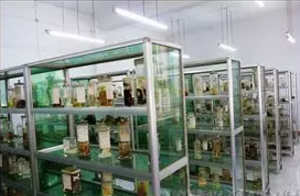How to correctly submit pathological specimens for examinati
Whether clinical doctors can conduct pathological examinations in accordance with regulations to some extent is related to reducing the limitations of pathological diagnosis and timely and accurate issuance of pathological diagnosis reports. Therefore, the correct submission of pathological specimens is of great significance for pathological diagnosis.
Pathology application form filling out
Whether it is an application form for preoperative, intraoperative, postoperative biopsy or cytological examination, clinical doctors should personally and carefully fill it out. Nurses, interns, or individuals who are not familiar with the condition should not be asked to fill it out on their behalf, as it is not only the basis and reference material for pathological diagnosis, but also a legal document responsible to the patient.
① The basic patient information on the pathology application form should be filled out item by item without any omissions. Factors such as age and gender are often necessary references for pathological diagnosis.
② The main clinical manifestations on the application form should be filled out as much as possible. For some special manifestations that are not included in the application form, they should also be provided proactively, which may have important reference value for diagnosis and differential diagnosis.
③ Clinical diagnosis, impression diagnosis, or several biased diagnoses should be truthfully listed in sequence. Pathological diagnosis has its own characteristics, but it is not exclusive and must be combined with clinical practice to reduce missed diagnosis and misdiagnosis.
④ Those who have undergone pathological examination before should indicate that if done in an external hospital, the patient should provide the original pathological diagnosis or a copy of it, and if necessary, borrow the original slice or smear for comparison.

Specimen fixation and delivery
① Samples sent for routine testing are generally fixed with 4% neutral formalin (i.e. formaldehyde) solution; After the cytological smear is naturally dried, it is immersed in 95% ethanol for fixation; Frozen specimens cannot be fixed with any liquid; Special staining specimens such as fat and glycogen need to be frozen and sliced; Specimens that require immunofluorescence technology, molecular biology methods, and chromosome analysis cannot be fixed and should be delivered as soon as possible in a sealed and disinfected container at 4 ℃.
Electron microscopy small specimens (1mm3 in size) are generally fixed with 2.5% glutaraldehyde.
If the accumulated fluid in the body cavity can be delivered to the pathology department within 30 minutes, no fixed solution needs to be added. If it is expected to exceed this time limit, neutral formalin solution should be added in an appropriate amount for fixation (formalin solution should be added to the liquid sent for testing, with a concentration not exceeding 4%).
② The specimens submitted for testing should be fixed as soon as possible. Large specimens should be cut open and fixed to prevent the middle part from self dissolving and decaying. To prevent gas containing specimens such as lung tissue and fat rich specimens such as adipose tissue from floating on the surface of the fixation solution and being poorly fixed, a thick gauze pad should be covered on top or a heavy object should be used to make it fall.
③All containers or cell smears of specimens submitted for examination should indicate the patient’s name and be delivered together with the pathology application form. Small specimens taken from different parts of the same case should be packaged in small bottles. The container for sending large specimens should not only be able to accommodate both the specimen and more than 5 times the amount of fixative, but also ensure that the specimen can be removed smoothly after fixation.
Diagnostic pathology is closely related to clinical departments, especially surgery. Regular communication is necessary to reduce the limitations of pathological diagnosis and minimize missed diagnosis and misdiagnosis.





